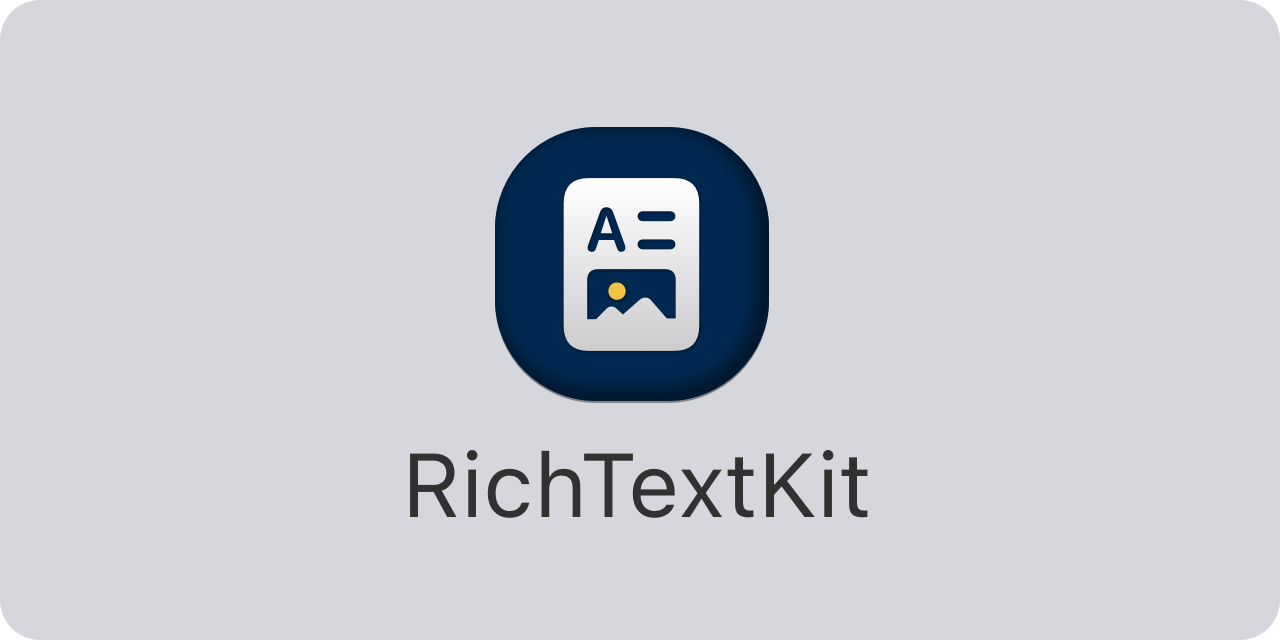RichTextKit helps you view and edit rich text in SwiftUI, UIKit and `AppKit.
RichTextKit has a SwiftUI RichTextEditor that builds on a multi-platform RichTextView that supports text style (bold, italic, underline, strikethrough etc.), font, font sizes, text and background colors, text alignment, images etc.
RichTextKit is supported by and released with permission from Oribi and used in OribiWriter, which is available on iOS and macOS. Have a look at that app or the demo app in this repo if you want to see RichTextKit in action.
RichTextKit supports iOS 14, macOS 11, tvOS 14 and watchOS 7.
RichTextKit can be installed with the Swift Package Manager:
https://github.com/danielsaidi/RichTextKit.git
If you prefer to not have external dependencies, you can also just copy the source code into your app.
The online documentation has a getting started guide to help you get started with RichTextKit.
RichTextKit has a SwiftUI RichTextEditor, which takes a text binding and a RichTextContext:
struct MyView: View {
@State
private var text = NSAttributedString(string: "Type here...")
@StateObject
var context = RichTextContext()
var body: some View {
RichTextEditor(text: $text, context: context) {
// You can customize the native text view here
}
}
}The editor uses a RichTextCoordinator to sync changes between the context, the editor and the underlying, platform-specific view.
You can now use the context to change the text binding and its font, font size, colors, alignment etc. You can also use the context to observe how these properties change, for instance when you move the text input cursor.
For instance, to display and change the current font size, you can use the context's RichTextContext/fontSize:
Button("Set font size") {
context.fontSize = 123
}
.onChange(of: context.fontSize) {
print("The current font size is \(context.fontSize)")
}This means that you can observe and act on any property changes in the context with plain SwiftUI events.
For more information, please see the online documentation and getting started guide.
In UIKit and AppKit, you can use the underlying RichTextView directly, instead of a UITextView or NSTextView:
RichTextView(data: myData, format: .archivedData) // Using data
RichTextView(string: myString, format: .plainText) // Using a stringRichTextView has a lot more functionality than the native views and bridges the platform-specific api:s so that the views behave more alike across platforms.
The online documentation has more information, code examples, etc., and lets you overview the various parts of the library.
The demo app lets you explore the library on iOS and macOS. To try it out, just open and run the Demo project.
I manage my various open-source projects in my free time and am really thankful for any help I can get from the community.
You can sponsor this project on GitHub Sponsors or get in touch for paid support.
Feel free to reach out if you have questions or if you want to contribute in any way:
- Website: danielsaidi.com
- Mastodon: @danielsaidi@mastodon.social
- Twitter: @danielsaidi
- E-mail: daniel.saidi@gmail.com
RichTextKit is available under the MIT license. See the LICENSE file for more info.





